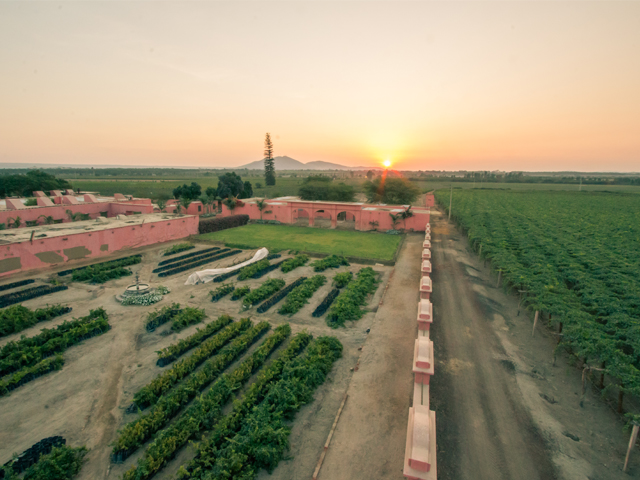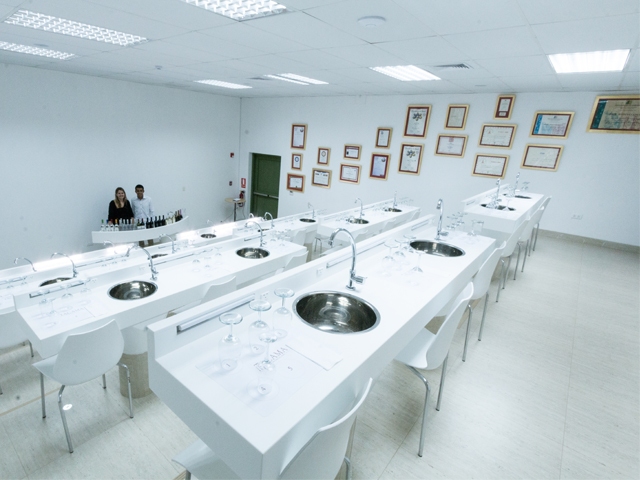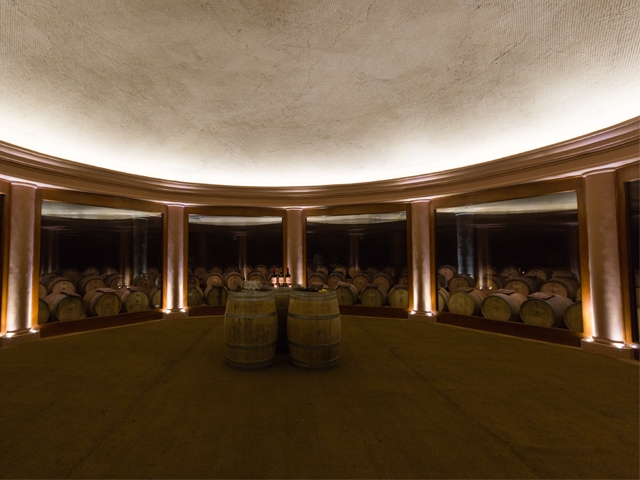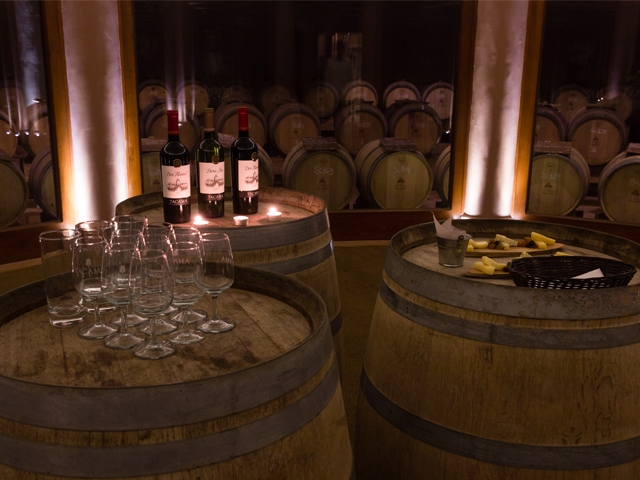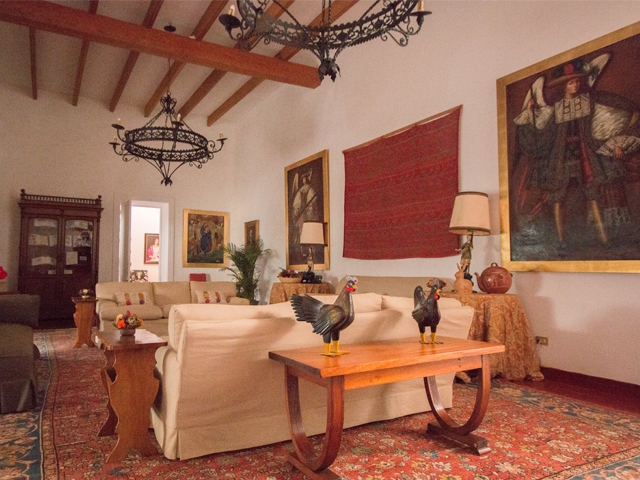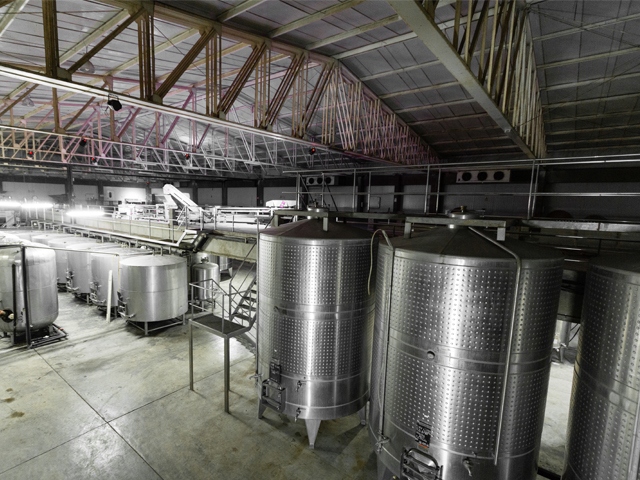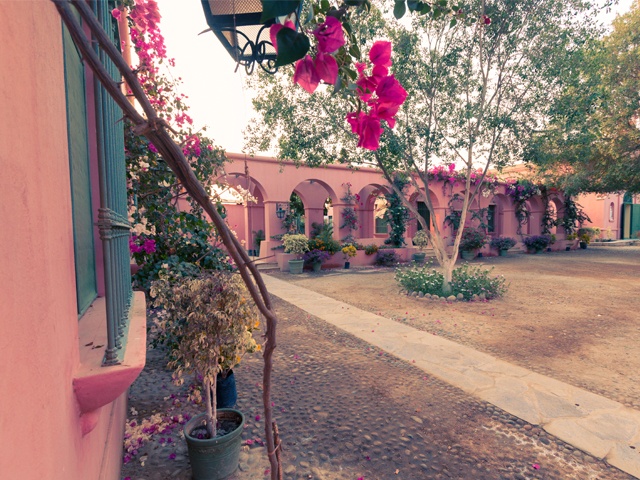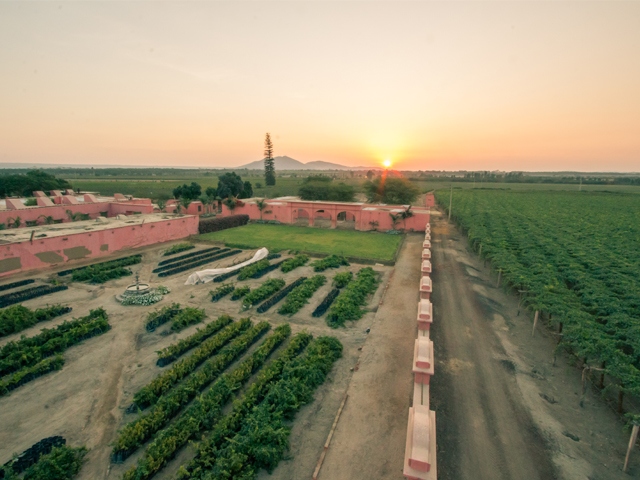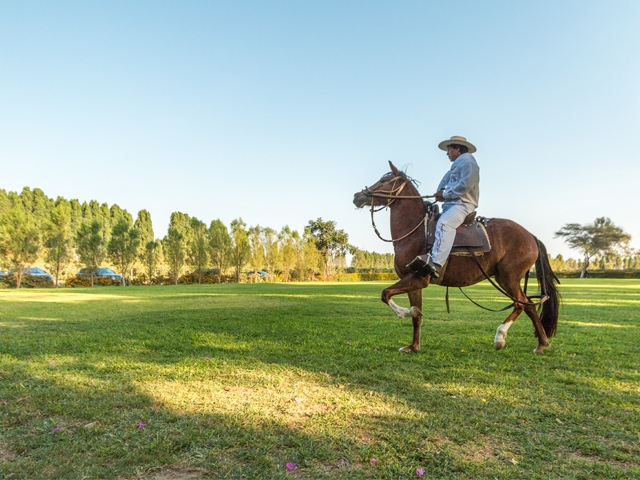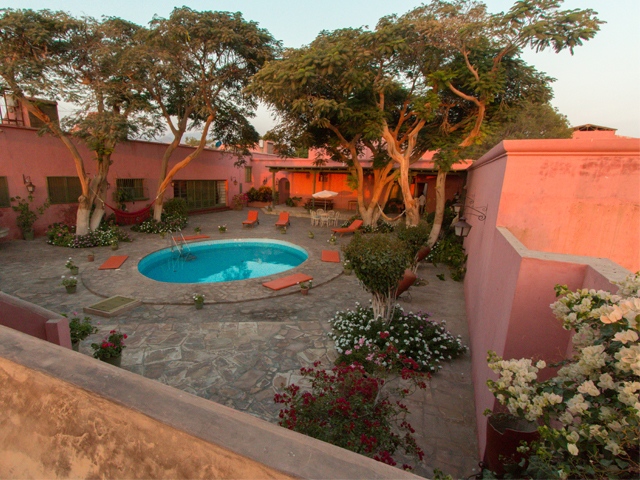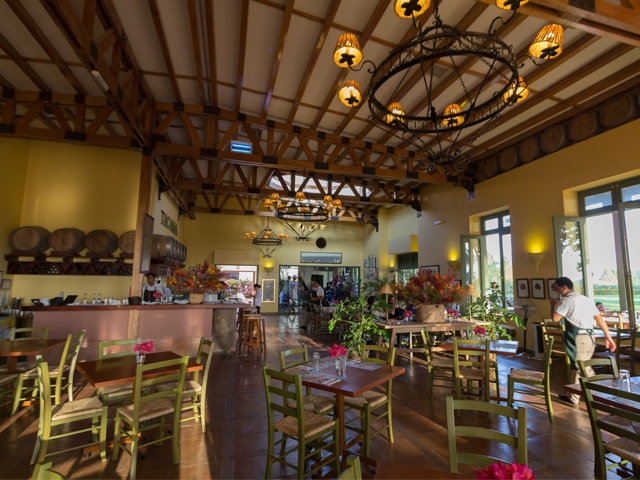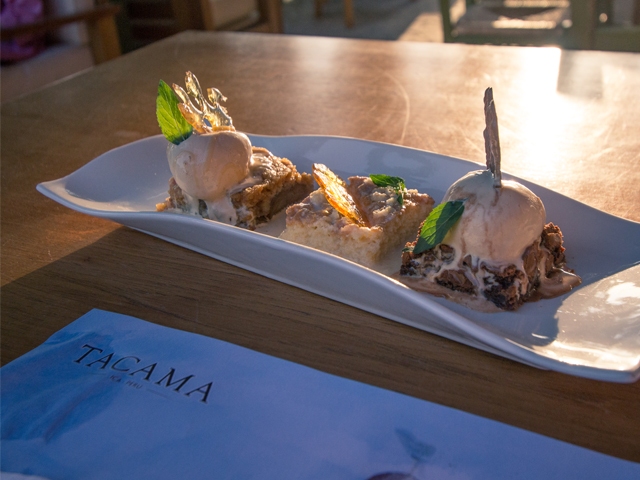The oasis of Ica, some 300km south of Lima, is home to Peru’s wine and pisco-producing vineyards. There, tucked amidst rows of grapes, sits the sprawling bright-pink Hacienda Tacama, a standout winery in the region, which lays claim to being both the oldest winery in South America and Peru’s largest.
Having undergone extensive renovations in 2016, I headed to the sand-dune surrounded valley to test out the updated tour of Hacienda Tacama and to learn about and sample some of Peru’s best wines and pisco – a white grape brandy and the much-loved national spirit.
Hacienda Tacama offering heaps of history
A long driveway greeted us as we entered through the imposing estate walls. The property extends over 250 hectares in an area that has long been used for cultivation – the Incas planted coca leaves here long before the Spanish started growing grapes. The vineyard at Hacienda Tacama was created in the 16th century, thus eliminating the need to import communion wine from Europe for the recently established religious orders.
Then in the 18th century pisco production began in the region. We were quite happy to sample both products of the vine – enjoying creative pisco cocktails and wine paired with our lunch.
We ate on the patio of the onsite restaurant Tambo – a new addition to the property with an otherwise long history and commitment to preserving tradition. 1889 was the year the Olaechea family purchased Tacama from the Order of St. Augustine, and it has remained in the same family, producing wine and pisco, to this day.
Tacama Horses at Hacienda Tacama
While we ate lunch, we enjoyed a traditional horse show on the green grounds in front of us.
The first owner of the vineyard was an equestrian fan and brought over Arabian horses from Spain. Over the years they were bred with local Peruvian Paso horses to create the unique Tacama breed.
The show demonstrates the various stages of rearing, developing and training the special horses and combines equestrian skills with artistic and cultural flair.
Whilst I ate in the restaurant the day of my visit, Aracari guests are treated to a private outdoor lunch for a more intimate and less touristy experience. Alternatively, guests can take lunch on the terrace of the main Hacienda for an even more exclusive experience, overlooking an area the horse show can take place in.
Tour of Hacienda Tacama: Climbing the bell tower
Rich in local history, a visit to Hacienda Tacama with the comprehensive ”Don Manuel Tour” includes a stroll through the main cobblestone plaza, shaded by old trees and enclosed by colourful pink walls, which we enjoyed after our late lunch. At its heart is a chapel and bell tower, the latter built in 1815.
Climbing the ‘’escaleras al cielo’’ (stairway to heaven), as written on the tower, we made sure to test out the condition of the bell, with a toll as dusk crept it. In bygone days, the bell was used to mark the start of irrigation, working hours or to call everyone in for lunch. These days the vantage point can be used for more relaxing purposes – photographing the sunset while enjoying a special sundowner drink, which Aracari can arrange to add to your luxury travel Peru experience.
Pisco and wine tasting
Hacienda Tacama grows 23 varieties of grapes – 18 used for alcohol (the rest for eating), of which eight are turned into pisco.
Off the main square is the entrance to the production area of Hacienda Tacama, a modern plant that sits alongside the old hacienda. Here we continued our tour and guided through the elaborate process, where old-fashioned machinery is on display as a reminder of old production methods. These have since been replaced by modern machinery, though the enormous old wooden barrels from Slovenia once used for fermentation were more photogenic that the contemporary concrete tanks used today!
Over the years, technology, new grape varieties and know-how have all been imported to elevate Hacienda Tacama into one of Peru’s most prominent pisco and wine-producing vineyards. Approximately 2.5 million bottles of pisco are produced per harvest, which takes place in Ica from December through March.
Forty percent of Hacienda Tacama’s product – wines, sparkling wines and pisco – is exported. Whilst more wine is produced overall, more pisco is exported, with Peruvian wines still less well-known and lauded on the international wine scene. The next stop on our tour was to try them out and judge for ourselves!
Pisco and wine tasting hall
Before we delved into the exclusive cellar for our tasting session, reserved for VIP guests, we got a chance to see the brand new tasting room otherwise used. A super-slick room akin to a lecture hall, there were multiple stations designed for tasting Hacienda Tacama’s goods. The perfect whiteness of this 2016 addition to Tacama recalled a modern lab. The room can be used for wine and pisco tasting as well as cocktail classes.
Classic vineyard cellar at Hacienda Tacama
Instead, our itinerary had us head down to the underground cellar with affable Humberto, the Head Sommelier, for our tasting session. Just before doing so we enjoyed a short informative video in English to put the Hacienda and wine-producing process into context and to understand the work that goes into creating top-line wines.
The cellar, with a backdrop of barrels of the best wines, is a space only opened up for VIPs and special guests, like those who travel with Aracari. It feels exclusive and is well presented – even the ceiling follows the wine theme, decorated with over 120,000 corks.
Here we tried premium red and white wines aged in oak barrels: Tacama Doña Ana, Don Manuel Petit Verdot 2014, Don Manuel Tanat 2015. Humberto guided us through the process of examining the properties of wine – colour, temperature and density. These are the wines included in the Don Manuel grand tour of the Hacienda – though we also added on a sample of Gran Demonio Acholado (Pisco), with a 43 percent alcohol volume. These exclusive access visits in Peru are what sets Aracari apart.
Overnight at Hacienda Tacama
After enjoying an ample selection of wines and spirits throughout the lunch and afternoon tour, we were glad we didn’t have far to go to reach our accommodation: the owner of Hacienda Tacama, Luz María, had generously invited us to stay in the historic house, her private family home.
Staying in the hacienda is by invitation-only, which Aracari can arrange for VIP guests interested in a unique experience. Insider experiences in Peru like staying overnight at a private hacienda gives a true flavour of the history and culture of this amazing country.
Overall, a visit to Hacienda Tacama is a great experience for anyone interested in learning about wine and pisco production in Ica, Peru. It’s educational and fun, and the staff are knowledgeable and welcoming. It’s also a unique chance to visit a traditional hacienda – a little piece of well-preserved Peruvian history and culture.
If you’d like to visit Hacienda Tacama in Ica as part of a luxury travel Peru itinerary, Aracari can arrange exclusive access. Contact us at travel@aracari.com to start planning your tailormade trip.

